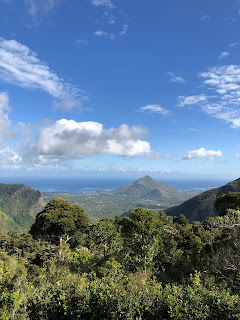Heydays
Last summer, there was an attempt on Twitter to produce the official wader league table between the UK reserves, ranking them on how many species they had recorded over the entire lifetime of the reserve. The results shocked me! As a young birder, there were reserves at the top that I never would have predicted: Blacktoft Sands (52 species) above Frampton Marsh (47); Breydon (55) above Titchwell (53); Pagham Harbour (56) above Spurn (55).
Ask any young birder to name a top 10 site for waders and they'd probably say Frampton Marsh. Yet just over a decade ago it was a collection of fields and consequently it finds itself a long way down the table at position 37!
In this way, birding perspectives change with every generation. If you were looking to live in a mainland rarity hotspot, this year you might go house hunting in East Yorkshire! Yet, a while ago you'd probably be mad not to have picked Norfolk.
Perspectives can change dramatically in the short term too. Birds are unpredictable and their occurrences susceptible to tiny things - like a butterfly flapping its wings, as the adage goes. Whether it's the changing climate, species irruptions or different habitats, sites seem to have their heydays and then lie somewhat under the radar. For example in Autumn 2011, Chew Valley Lake held Sharp-tailed Sandpiper, 2 Long-billed Dowitchers, Semipalmated Sandpiper and Spotted Sandpiper on a single day, thanks to low water levels! Since then, while it's had its fair share of interesting birds, it's hardly been the wader capital of the UK.
Whilst one bird or one good season won’t necessarily change a site’s reputation, birding opinions do regularly change, and in a surprisingly short amount of time too. My perception of the wader tables just goes to demonstrate the difference between my birding background and that of someone who's been twitching since the 80s and has witnessed all the rare waders at Breydon or Pagham.
If you'd started avidly birding and twitching all during 2021, perhaps you'd be booking your autumn holiday to Papa Westray in 2022, based on a sample size of one Varied Thrush! On a wider scale though, this inadvertent tug-of-war as sites vie for birders' attentions might actually change the distribution of rarities! Or, more precisely, change the distribution of where they're being found.
It's a funny thing, birding mentality, because really it shouldn't make much difference to where the birds themselves are found. Yet it's certainly true that where birders see birds being found is where the birders go, and consequently where the birds will be found in the future. It's a self-perpetuating cycle. Many people will fondly remember the 'glory days' of Scilly in October, perhaps now we're standing on the edge of some rarity-filled years in East Yorkshire.
So, this change in site fortune that I'm witnessing in the wader tables could be similar to The Spurn Effect. But a long-term version. The more rarities found at a site over recent years, the more birders will flock there at the right times of year hoping to find their own. It is only natural that this increase in coverage will then lead to more rarities being found. Over time, the rich sites will get richer! The reverse effect works too, as sites lose visitors and lose rarities as a result. After having their heyday, they now lie somewhat dormant.
It is quite motivating to think then that your own personal coverage could put your patch "on the map". A site simply being at the forefront of birders' minds, is all that is needed to increase coverage and increase the number of birds being found! Belvide Reservoir springs to mind for me - diligent patch watching by a small number of individuals has put this site on the map as one of the premier midland rarity localities. More and more good finds are bound to follow as a result.
In this way, patch birding is like an investment - your time and energy and great finds might one day cause more rarities to be found on the site by visitors, drawn in by your records. You could genuinely make your patch better for birds! Albeit not by literally increasing the number of rarities present, but that isn't a number we ever get to witness anyway. Instead, we measure site success by the number of rarities found, meaning it is literally possible to improve your patch by visiting more.
Admittedly, most of us aren't lucky enough to live near a premier UK site e.g. high up on the wader tables, and by rarities I don't necessarily mean those of the calibre of an Eleonora's Falcon. But these things work on local scales too. It might only take a few nuggets of patch gold to trigger your patch's heyday, and spark some exciting rarity-filled years to come. Your patch might have been a dormant volcano for many years now, but with sufficient visits, perhaps you could start a period of eruptions.



Very wise words indeed, Matt, and an interesting read. Take good care - - - Richard
ReplyDeleteThanks Richard! I'm really glad you enjoyed it, take care yourself, Matt
ReplyDelete